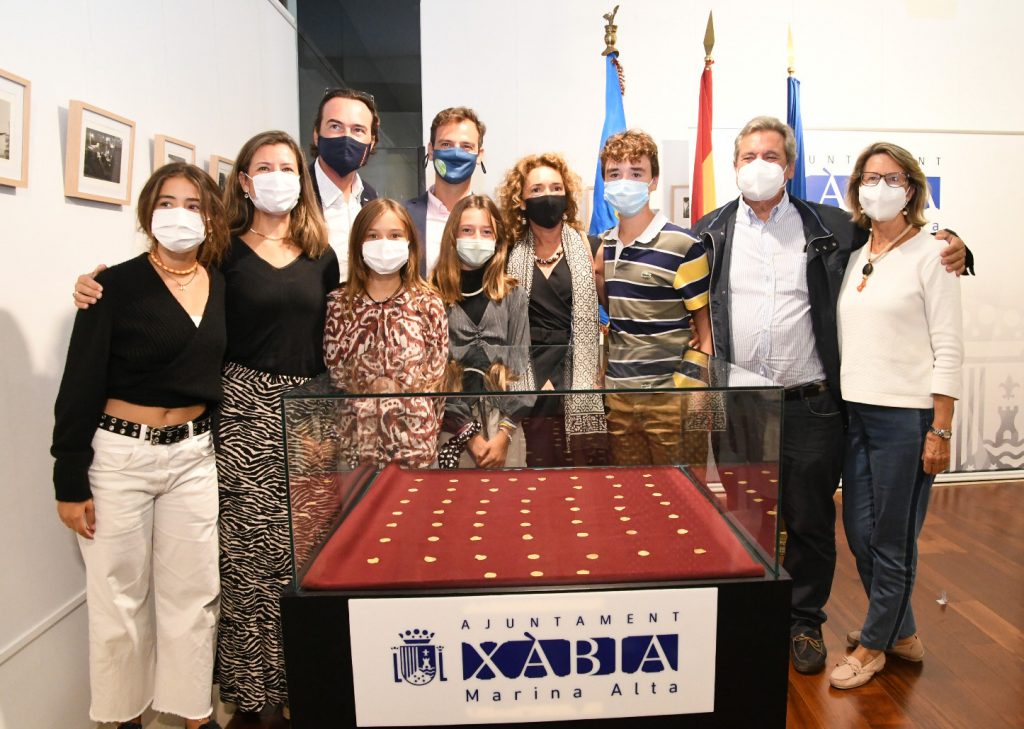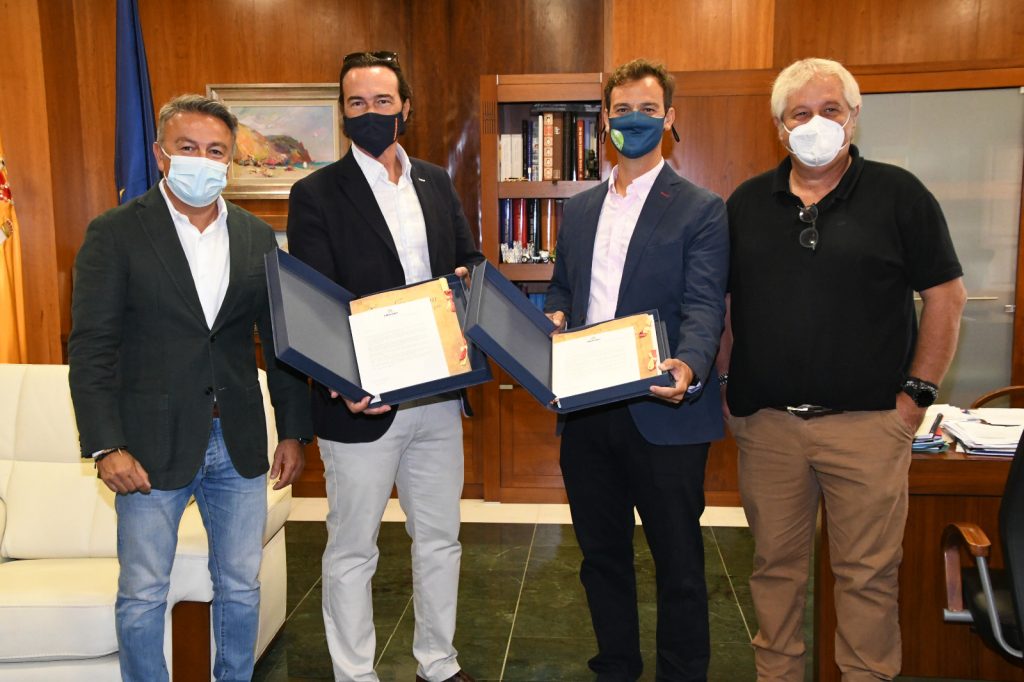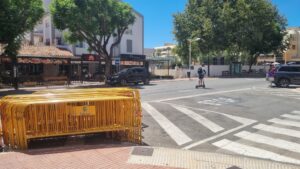Two divers discover 1,500-year-old Roman gold coins on the seabed of Portixol
The Generalitat Valenciana, the University of Alicante and the Xàbia Council will carry out underwater excavations to investigate the area in which 53 coins have already been found.

Monday 27th September 2021 – MIKE SMITH
For some 1,500 years, the seabed around the island of Portitxol in Xàbia has been sheltering one of the largest sets of Roman gold coins to be discovered not only in Spain but also in Europe. What started as the discovery of a handful of coins by divers Luis Lens Pardo and César Gimeno Alcalá turned out to be a massive haul of treasure as well as evidence of the deteriorated remains of a chest.
The collection of 53 coins have been dated to the late Roman period, specifically between the end of the 4th century or beginning of the 5th century, by the Department of Archaeological Research and Historical Heritage at the University of Alicante.
Their perfect state of preservation, which even allows the inscriptions to be read, identifies them as coins from the periods of government of the emperors: Valentinian I (3 coins), Valentinian II (7 coins), Todosio I (15 coins), Arcadi (17 coins), Honorius (10 coins) and an unidentified coin.
The two recreational divers came across eight coins whilst diving in the area and notified the General Directorate of Culture and Heritage which has a unit specifically formed for such discoveries. Archaeologists from the University of Alicante and the GEAS of the Guardia Civil, in collaboration with the town hall in Xàbia, carried out a series of dives in the area which resulted in the discovery of a total of 53 coins.
The University has confirmed that it one of the largest sets of Roman gold coins found in Spain and Europe and considers it to be an “exceptional find” at an archaeological and historical level since its research can offer new information in understanding the final phase of the fall of the Western Roman Empire. Historians have already suggested that the coins were intentionally hidden to avoid looting by the barbarian tribes (Suebi, Vandals and Alans) which had crossed the Pyrenees in 409AD and prompted a historical moment of extreme insecurity and the end of the Roman Empire in the Iberian Peninsula.
The coins will be restored by the IVCR+I (the GVA Valencian Institute of Conservation, Restoration and Research) after which they will be exhibited in the Soler Blasco Archaeological and Ethnographic Museum in Xàbia.
A special presentation of the coins was held at the museum which was attended by the head of the Culture in Alicante, José Antonio López, the mayor of Xàbia, José Chulvi, the vice-rector for Research of the University of Alicante, Juan Mora Pastor, and the chief commander of the Guardia Civil in Calp, Jerónimo Pacheco.
Also in attendance were the two divers who discovered the first coins, Luis Lens Pardo and César Gimeno Alcalá, and the mayor José Chulvi had a sincere word of thanks: “Luis and César found some coins as a matter of luck and chance. But from then on, all their actions have been fully conscious and exemplary, giving part of what they had found to the administration and collaborating in everything that has been asked of them from that moment, both in the location of the site and in the necessary discretion to avoid looting. We are talking today about two very valuable discoveries, the one that our seabed hid, and that two people of integrity, committed to the collective heritage and who have shown great respect and generosity with the municipality in which they have their second residence”.

The mayor added that Xàbia is a “legitimate custodian” of what he considers to be “a treasure of our historical legacy” and that the municipality will fight so that this discovery and others of interest remain in the town and become part of the permanent collections in the Soler Blasco Municipal Museum. These discoveries, together with other projects such as the submerged museum in Portitxol, place Xàbia as a place of reference in underwater archaeology.
For his part, the vice-rector of Research at the University of Alicante, valued the prospecting, documentation and photogrammetry work carried out by the university’s scientific team in which underwater archaeologists with extensive national and international experience have participated. Led by the professor of Ancient History, Jaime Molina, the project also has the participation of José Antonio Moya, Jordi Blázquez and Alejandro Pérez, from the University Institute of Archeology and Historical Heritage (INAPH) of the University of Alicante and Ximo Bolufer, from the Museum Soler Blasco de Xàbia.
From the regional government, José Antonio Serrano explained that the Generalitat Valenciana has put aside some 17,800 euros to continue investigating the area, a campaign of underweater archaeological excavations directed by the same team that is in charge of the General Plan for Underwater Archaeological Research ‘Archaeological Surveys in Portitxol de Xàbia’ in which both the University of Alicante and municipal museum in Xàbia are participating.
The bay of Portitxol in Xàbia is an area well known for the abundance of underwater archaeological remains currently under study. In 2019, a joint research project was started between the Council, the University and the Generalitat that is still in force and that has brought to light anchors, amphora loads, ceramic remains from different periods, metallic material, elements associated with ancient navigation, etc. In fact, one of the archaeologists in charge of the project, José Antonio Moya, has defined it as “a history book that we are reading little by little and of which, fortunately, this page has not been lost”.



